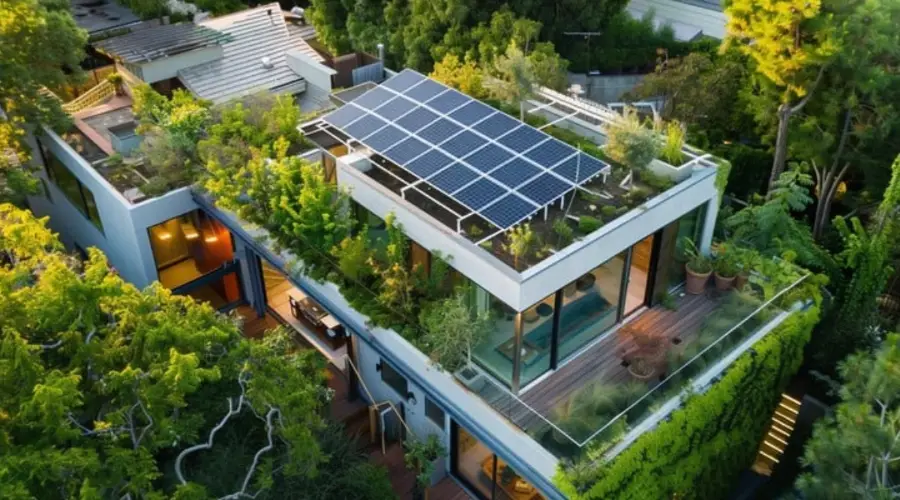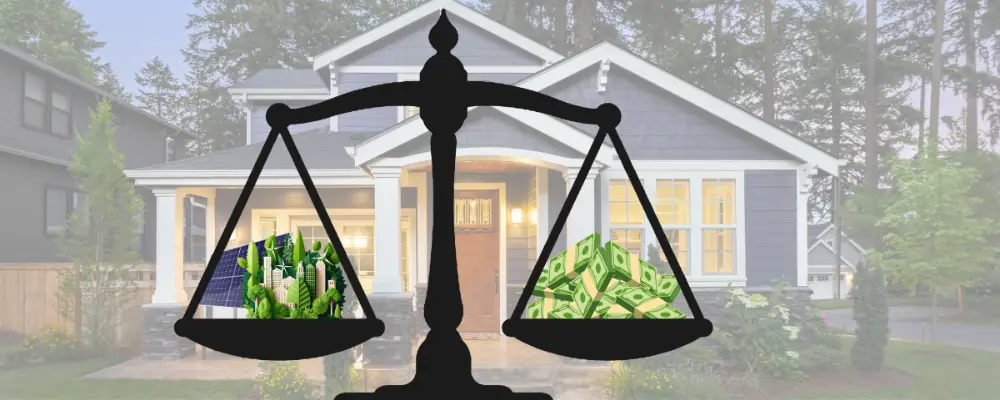By working on more urban or progressive projects, the construction industry, which is rapidly expanding, aims to give people a comfortable and secure place to live. This brings us to the crucial element known as reliable construction. This method supports the construction industry in using natural resources to construct buildings in a way that doesn’t negatively impact the environment.
Using sustainable building practices lowers a project’s ecological impact, which can be either beneficial or detrimental. In addition, it can enhance health, save resources for future generations, and yield long-term financial gains. We can briefly examine the overview, fundamental ideas, techniques, applications, and advantages of sustainable construction in this article.
Overview of Sustainable Construction Methods

Reliable construction practices are essential for enhancing living standards and safeguarding the environment. In non-urban areas, people depend on natural resources, clean air, and an environment free of toxins. By implementing green building practices and cutting-edge technologies, the construction of buildings in densely populated areas seeks to lessen the environmental impact of the sector.
The construction industry has a special chance to take the lead in environmental stewardship because it is a significant resource and energy consumer. Among the primary benefits of green construction are waste reduction, water-efficient systems, energy savings, environmentally friendly materials, and better indoor air quality—all of which contribute to resource and environmental preservation.
Key Principles of Sustainable Construction
Following measures such as the 2015 Paris Agreement and the ‘Building to Net Zero’ plan, the seven principles of eco-friendly construction were developed. By reducing the carbon footprint of the construction industry, these guidelines help to create a greener sector. Below is an explanation of each principle:
- Sustainable Designs
Green design minimises the construction practices that affect the environment. This strategy promotes net-zero objectives and provides organisations with long-term advantages like cheaper expenses, less energy use, and less labour.
Builders can adhere to construct green building methods following guidelines of the Building Research Establishment Environmental Assessment Method (BREEAM). Businesses can prioritise the green building by implementing the following things in their projects:
- Energy efficiency
- Conserving water
- Eco-friendly materials
- Social justice
- Waste reduction
- Durability
- Durability
This principle refers to using solid materials and construction techniques that can withstand the test of time. The idea is to ensure that the new and existing buildings should stand persistently by minimising the maintenance and replacement of materials. Such practices support environmentally friendly building objectives by lowering waste and increasing resource efficiency. This entails the use of strong components that can withstand wear, corrosion, and weathering while effectively managing prolonged or severe use.
- Energy Efficiency
In India, the energy efficiency framework is primarily governed by the Energy Conservation Building Code (ECBC), which sets minimum energy performance standards for new commercial Construction and major renovations. The ECBC addresses key aspects of energy efficiency, including building envelope design, lighting systems, and HVAC systems to minimise heat gain, use energy-efficient lighting, and select efficient heating and ventilation. Additionally, the Shunya Labeling Programme promotes Net Zero Energy Buildings (NZEB), which generate as much energy as they consume. Collaborative efforts by the Indian Green Building Council and the Green Rating for Integrated Habitat Assessment further enhance energy-efficient building practices across the country.
- Reduction of Waste
Implementing techniques to reduce waste encourages recycling, utilising repurposed materials, and avoiding unnecessary new development. The industry’s “demolish and rebuild” mentality often ignores the advantages of circular building, leading to the use of unsuitable materials like RAAC and generating substantial waste.
Retrofitting, adhering to the waste management hierarchy (Reduce, Reuse, Recycle, Dispose), and utilising resources such as the Site Waste Management Plan (SWMP) can support the idea of reducing waste in construction.
- Quality of Indoor Air
Natural ventilation has frequently been disregarded as climate control devices have grown in prominence. Design elements including solar chimneys, wind towers, ridge vents, high windows, porches, and clerestories can improve indoor air quality and ventilation, even if efficient airflow depends on specific location.
- Conserving Water
Water is the ultimate resource for everyone; all living organisms depend on water. Preserving this life-supporting element is a duty for us. If we lower our excessive water consumption, we can save it for future generations. The effective ways to reduce the usage of water are as follows:
- Low-flow equipment
- Monitoring, reporting, and enhancing water use
- Rainwater harvesting systems
- Effective irrigation; routine maintenance; and leak detection
- Materials for Sustainable Construction
Green building items are made from recycled or renewable resources and are intended for long-term use and reuse in order to reduce their negative impacts on the surrounding atmosphere. Successful sustainable building materials include carbon-storing materials, geotextiles made of natural fibres, concrete reinforced with natural fibers, and certified wood.
Sustainable Construction Materials
The components that improve the aesthetic and long-lasting appearance of structures are increasing day by day in the construction industry, including bamboo, mass wood, and creative concrete. They prioritise not to provide negative effects to the surrounding environment.
Nowadays, builders choose to use these kinds of materials in their projects from the start of the procurement process, pressuring suppliers to demonstrate that their goods are recyclable, socially conscious, and low-impact. Due to demand from green-building certifications like LEED and Green Globes, more businesses are increasingly creating Environmental Product Declarations (EPDs). A transparent method for comparing EPDs is still required, though.
Application of Sustainable Construction
Using renewable resources and implementing strategies to enhance sustainability are the main goals of sustainable construction, including:
- Limiting resources to cut down on waste.
- Recycling and material separation as waste management strategies.
- Constructing green structures.
- Utilising adaptive reuse to repurpose historic structures.
- Enhancing conservation on building sites (e.g., recycling, water purification, and no smoking).
- Preserving energy.
- Selecting recycled and ecological resources.
Benefits of Sustainable Construction
Beyond helping communities and the environment, sustainable building also enhances health. Here are a few main benefits:
Better Standard of Living: By enhancing features like lighting, air quality, temperature, and aesthetics, green buildings support the mental, emotional, and physical health of their occupants. For those residents, this enhances their quality of life and reduces stress.
Contributes to a Cleaner Environment: Sustainable building materials lower pollution via the use of viable construction practices and renewable resources.
Economic Boost: The green building sector stimulates the economy by producing significant revenue and jobs, especially in the labour and construction industries.
Cost-Effectiveness: Energy-efficient designs in sustainable buildings reduce maintenance and operating costs, saving owners money over time.
Reduced Material Costs: Recycled biocomposites and other eco-friendly materials are often more affordable and durable than conventional non-renewable resources without sacrificing quality.
Carbon Footprint Reduction: Since buildings account for 30% of greenhouse gas emissions, green buildings help lower these emissions. Businesses can also lessen their environmental impact by implementing sustainable practices.
How to Make Construction Sustainable Construction?
The process of becoming sustainable in construction is slow, but the rewards are great, and as technology develops and greener options become more accessible, solutions are getting cheaper. By utilising environmentally friendly materials, such as lumber and concrete sourced ethically, developers can embrace sustainable methods. These materials use less energy, produce less pollution, and require fewer resources. Because these materials are more resilient, structures require less maintenance and last longer.
Utilising recycled plastics can help minimise waste because they are robust, long-lasting, and require less upkeep. They are resistant to insects, dampness, and rot. Moreover, it can lower energy consumption and greenhouse gas emissions. Developers can use renewable energy sources like solar, wind, and geothermal to further reduce their environmental impact. This will enhance long-term sustainability, encourage energy efficiency, and lower pollution.
Conclusion
Because of the limitations of conventional development techniques, sustainable buildings are becoming more significant. The well-being of future generations and environmental protection depend on sustainable growth. By offering additional incentives to developers, builders, and purchasers of commercial buildings that adhere to sustainable principles, these issues can be resolved.
FAQ’s
Designing, constructing, and maintaining buildings in an environmentally responsible manner through the use of renewable resources, increased energy efficiency, and waste reduction is known as sustainable construction.
The following are the seven fundamentals of sustainable building that are frequently highlighted in different sources:
Design
Durability
Energy efficiency
Waste reduction
Indoor air quality
Water conservation
Building materials
The main goals of building sustainably are to preserve natural resources, lower greenhouse gas emissions, and enhance the health and well-being of occupants and the neighbourhood.
By employing environmentally friendly components, construction projects can reduce their environmental impact, save energy, decrease pollution, and preserve resources. They also contribute to a healthier home environment by lowering harmful chemicals and enhancing air quality.

